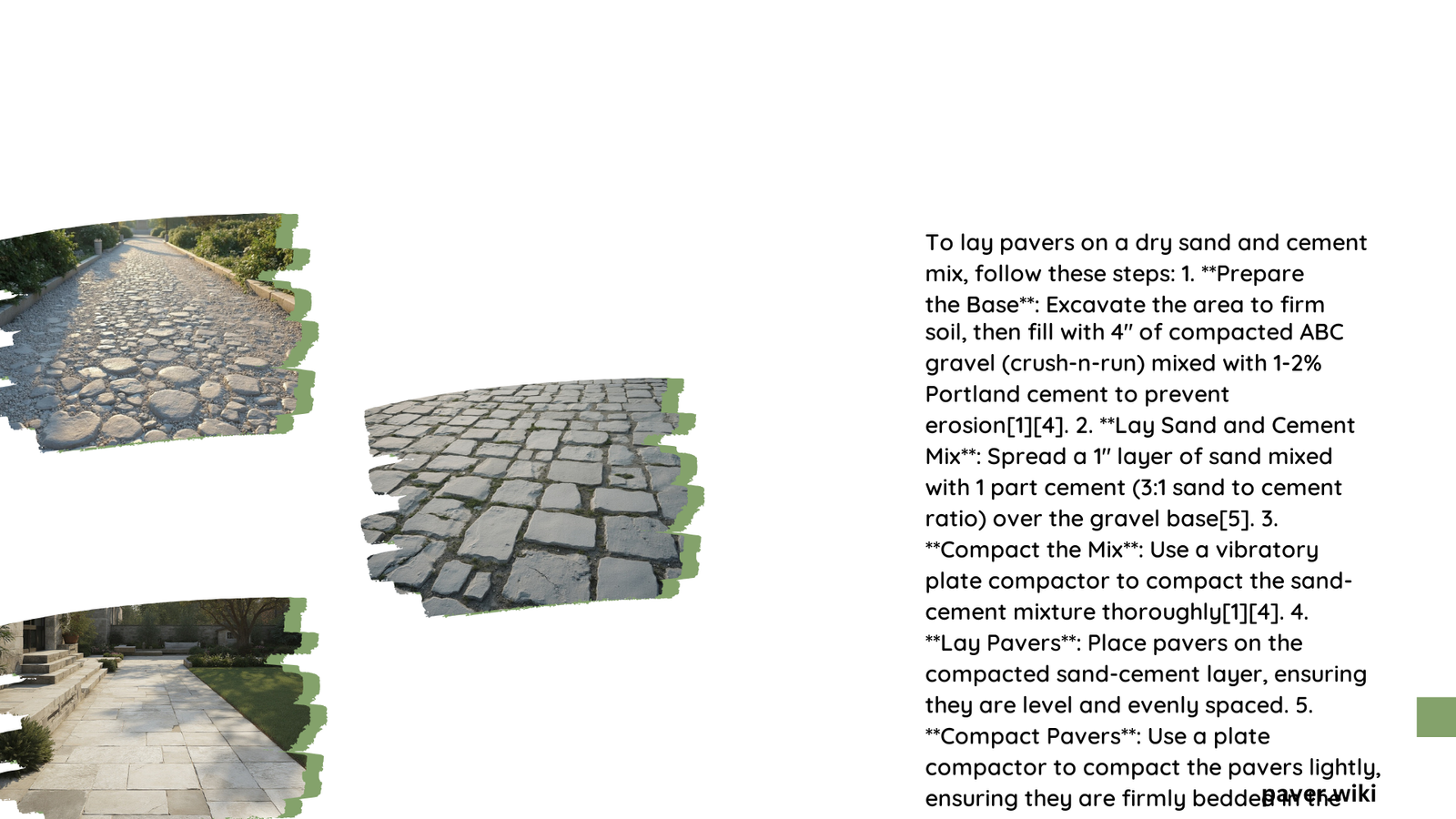Laying pavers on dry sand and cement mix is a popular method for creating durable and attractive outdoor surfaces. This technique involves using a dry mixture of sand and cement to fill the joints between pavers, providing stability and preventing weed growth. The process requires careful preparation, precise mixing ratios, and proper application techniques to ensure a long-lasting and visually appealing result.
What is the Ideal Ratio for Dry Sand and Cement Mix?
The ideal ratio for the dry sand and cement mix is 3:1 (sand to cement). This proportion provides the right balance of stability and flexibility for the paver joints. Here’s a breakdown of the mixing process:
- Measure 3 parts sand to 1 part cement
- Mix thoroughly without adding water
- Ensure a uniform color, indicating complete blending
Pro Tip: Use a large mixing tray or wheelbarrow for easier handling of the mixture.
How to Prepare the Paver Base?

Proper base preparation is crucial for a stable and long-lasting paver installation. Follow these steps:
- Excavate the area to the required depth (typically 6-8 inches)
- Add a layer of compacted ABC gravel (4-6 inches deep)
- Apply a 1-inch layer of screenings or coarse sand
- Compact each layer using a vibratory plate compactor
| Layer | Material | Depth |
|---|---|---|
| Base | ABC Gravel | 4-6 inches |
| Bedding | Screenings/Coarse Sand | 1 inch |
Optional: Place a geo-textile fabric under the stone to prevent erosion and improve stability.
What are the Best Application Techniques for Dry Sand and Cement Mix?
To achieve the best results when applying the dry sand and cement mix, follow these techniques:
- Ensure the paving surface is completely dry
- Spread the mix evenly over the paving surface
- Use a soft brush to sweep the mix into the joints
- Compact the mix using a pointing bar or trowel blade
- Repeat the process until joints are fully filled
Caution: Avoid applying on damp surfaces to prevent staining and ensure proper adhesion.
How to Address Common Challenges in Paver Installation?
Inadequate Compaction
- Problem: Light dry mix may not fill joints properly
- Solution: Use a pointing bar or trowel blade to compact the mix into the joints
Staining
- Problem: Dampness can cause mix to stick and stain pavers
- Solution: Ensure surface is completely dry before application
Weed Growth
- Problem: Poorly compacted joints can lead to weed growth
- Solution: Properly pack and fill joints before misting with water
What are the Cost and Timing Considerations?
Cost Estimates
- Materials cost varies based on project size
- Sand and cement typically range from £50 to £200
- Additional costs for base materials and tools
Timing Considerations
- Base preparation: 1-2 days
- Paver laying: 1-3 days (depending on area size)
- Jointing and settling: 2-3 days
- Total project duration: 4-8 days (weather-dependent)
Note: Allow at least 2 days for the dry mix to absorb moisture and harden.
How to Maintain Pavers Installed with Dry Sand and Cement Mix?
To ensure the longevity of your paver installation, follow these maintenance tips:
- Regularly sweep the surface to remove debris
- Periodically check for loose or sunken pavers
- Reapply jointing mix if necessary
- Seal the pavers every 2-3 years for added protection
By following these guidelines and techniques, you can successfully lay pavers on dry sand and cement mix, creating a beautiful and durable outdoor surface that will last for years to come.
References:
1. Paving Expert: Jointing and Pointing for Stone Paving – Dry Grouting
2. YouTube: Patio Dry Mix Cement Pointing Jointing Gap Fill between Flags How to
3. Fine Homebuilding: Dry concrete mix under a brick patio
